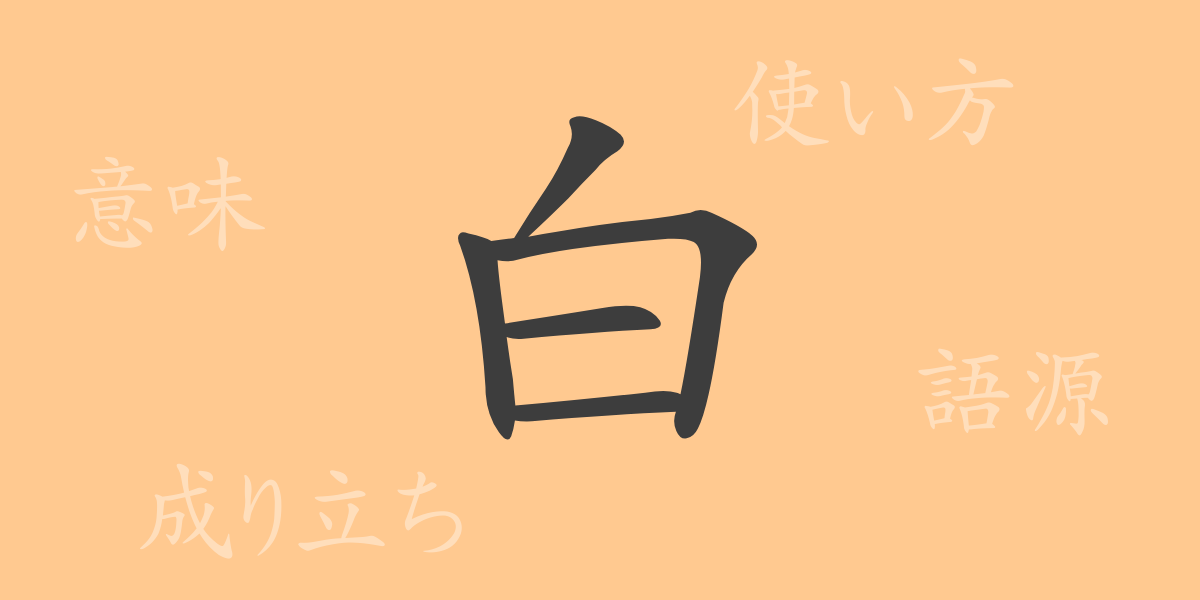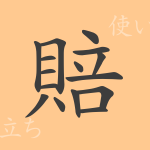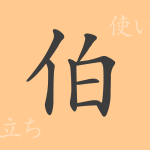Kanji, the characters used in the Japanese writing system, each carry their own unique history and meaning. Among them, the character “白” (shiro) stands out for its visually simple and clear impression, yet its applications are incredibly diverse. In this article, we will explore the origins, meanings, uses, readings, stroke count, and radicals of the kanji “白” (shiro). We will also introduce some common idioms, proverbs, and phrases that include this character, offering you a deeper appreciation of the richness and depth of the Japanese language.
Origins of 白 (Shiro)
The origins of the kanji “白” (shiro) date back to ancient times, with its roots seen in oracle bone inscriptions. It is believed to symbolize the sun’s rays shining down on the earth, brightening everything below. Over time, “白” (shiro) became a symbol of brightness and purity, establishing itself as a prominent character in the Chinese writing system. When the kanji writing system was introduced to Japan, “白” (shiro) was adopted and used in various contexts, reflecting different nuances and meanings.
Meanings and Uses of 白 (Shiro)
“白” (shiro) primarily means “white,” “pure,” or “bright.” As one of the basic characters used to describe colors, it is frequently used in contexts that refer to the literal color white. Additionally, “白” (shiro) is employed metaphorically, as seen in expressions like “白紙に戻す” (to start over from scratch) or “白状する” (to confess). The character also symbolizes innocence and purity, as in contexts where it conveys moral cleanliness or virtue.
Readings, Stroke Count, and Radical of 白 (Shiro)
The kanji “白” (shiro) has various readings and is a fundamental element in Japanese writing.
- Readings: The on’yomi (Chinese reading) includes “ハク” (haku) and “ビャク” (byaku), while the kun’yomi (Japanese reading) includes “しろ” (shiro) and “しら-” (shira-).
- Stroke Count: “白” (shiro) consists of five strokes.
- Radical: The radical of this kanji is “白部” (shirohen).
Idioms, Proverbs, and Phrases Using 白 (Shiro)
There are numerous idioms, proverbs, and phrases in Japanese that include the character “白” (shiro). For example, “白日に晒す” (hakujitsu ni sarasu) means to expose a hidden fact or shameful deed to the public. “白黒つける” (shirokuro tsukeru) refers to making a clear decision or conclusion. “白紙撤回” (hakushi tekkai) means to retract something that has already been decided, and “白眉” (hakubi) is used to describe someone or something that stands out as the best among a group. These expressions are commonly used in everyday conversation and business settings, enriching the expressive power of the Japanese language.
Conclusion on 白 (Shiro)
The kanji “白” (shiro) may appear simple, but it holds a multitude of meanings and plays a significant role in the Japanese language. As a basic color character, and through its use in various idioms, proverbs, and phrases, it adds depth and nuance to our communication. We hope this article has helped you appreciate the history and cultural significance embedded in each kanji character, and that it aids in your understanding of the Japanese language.

























